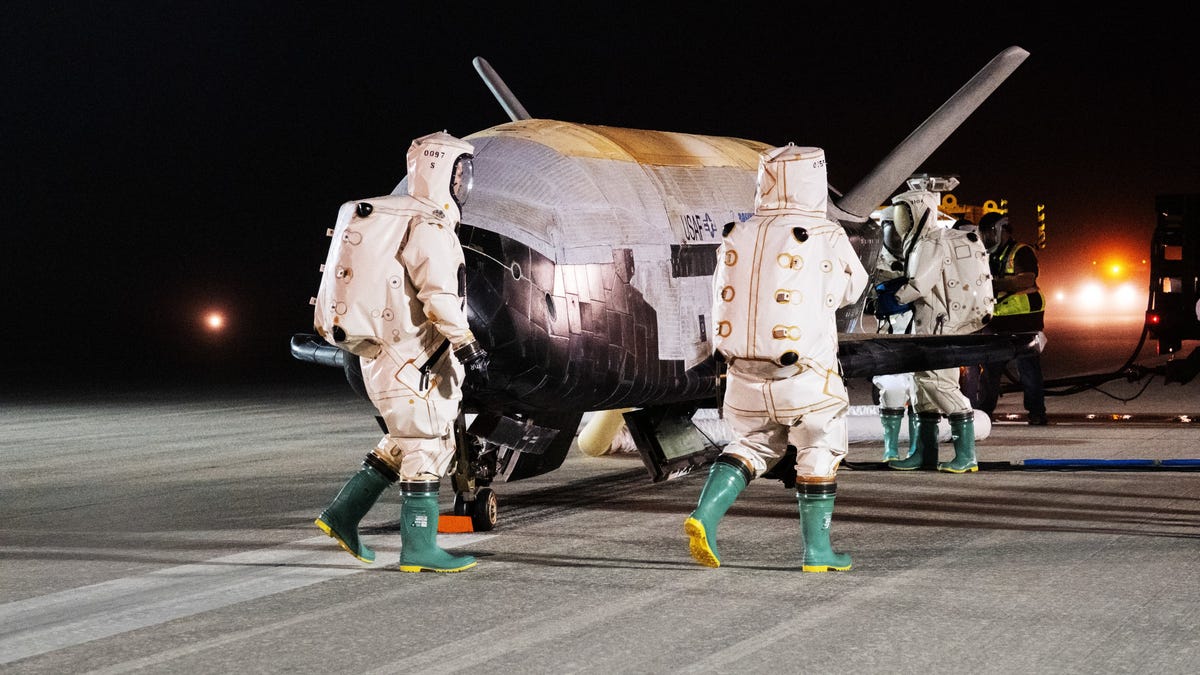Space Force's Spunky Space Plane Lands After 908 Days in Orbit
The X-37B has a secretive history, but we know a bit about what it was doing on its latest space journey.
In May 2020, the US Space Force launched its X-37B space plane into orbit. On Nov. 12 -- 908 days later -- it landed back on Earth, generating sonic booms over Florida. That's a remarkable stretch of time for the uncrewed, reusable spacecraft to spend zipping around Earth.
The Boeing-built space plane resembles a scaled-down, windowless version of the space shuttle. It had been an Air Force project before the Space Force branch of the military came into existence three years ago. The Space Force now operates the X-37B, which is also known as an orbital test vehicle.
The X-37B looks like a small space shuttle.
Much of the space plane's past work has been secretive, but we know this most recent mission carried a Naval Research Laboratory antenna experiment and multiple NASA experiments, including an investigation of radiation shielding materials. NASA has been looking into ways to protect spacecraft and astronauts from damaging radiation on longer-duration missions. NASA also ran a seed experiment on board to see how seeds react to the stresses of a long-term spaceflight.
In addition to the experiments, the X-37B released a small Air Force Research Laboratory satellite into orbit in late 2021. "FalconSat-8 remains in orbit, providing [Air Force] Academy cadets unique hands-on experience as space operators prior to entering active duty," the Space Force said in a statement on Saturday.
The OTV-6 mission was the first time the space plane had flown with a service module attached to the rear of the vehicle. The module allowed the X-37B to host more experiments than usual, and it separated from the space plane before its return. The Space Force said the module will be disposed of -- likely burning up in Earth atmosphere -- in a way that won't contribute to the growing problem of debris in orbit.
There are two X-37B spacecraft, which together have logged thousands of days in space. The latest mission set a record for spaceflight duration for the vehicle. It's likely the next mission will aim to pass the 908-day mark as the Space Force continues to push the space plane's capabilities.


